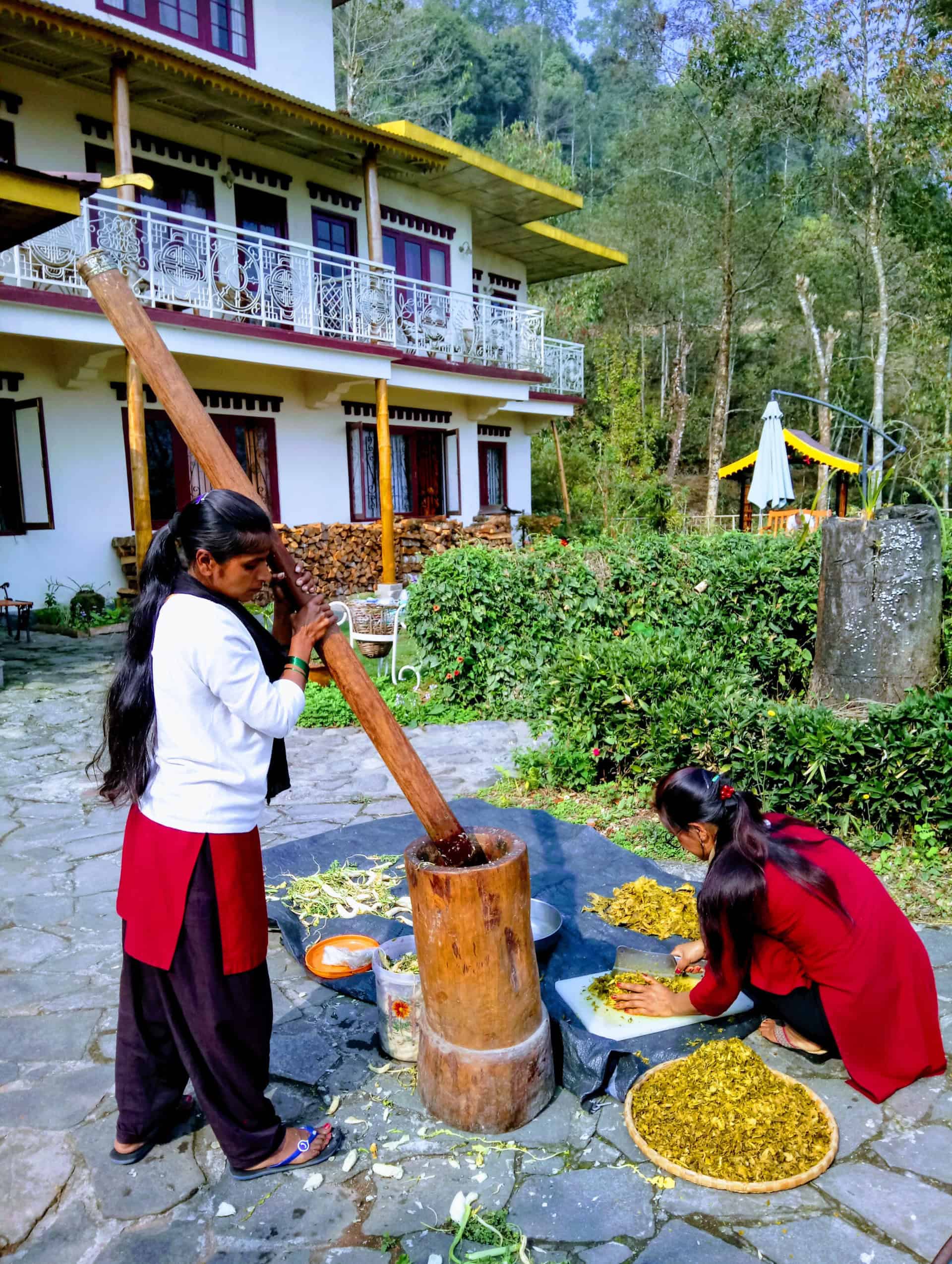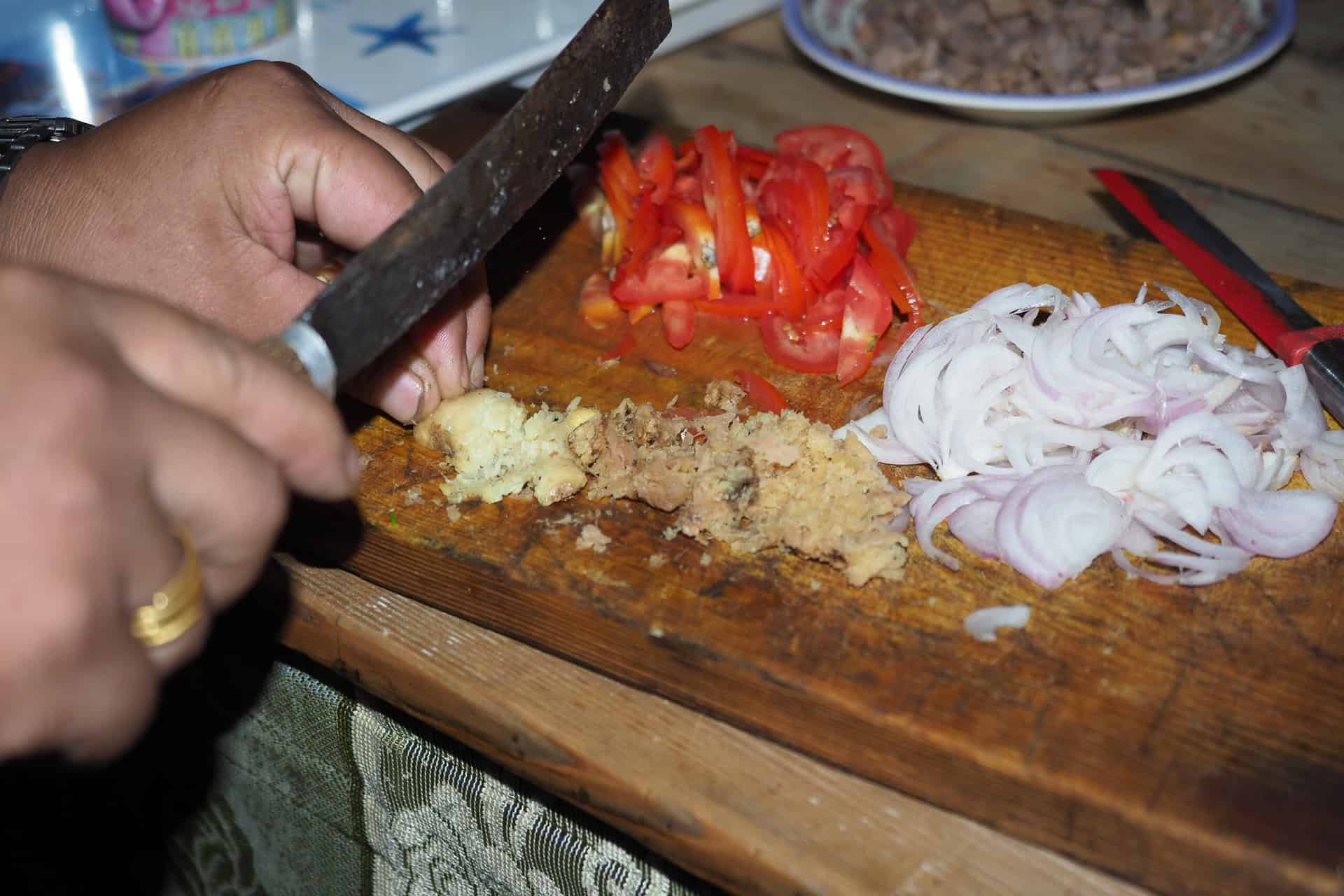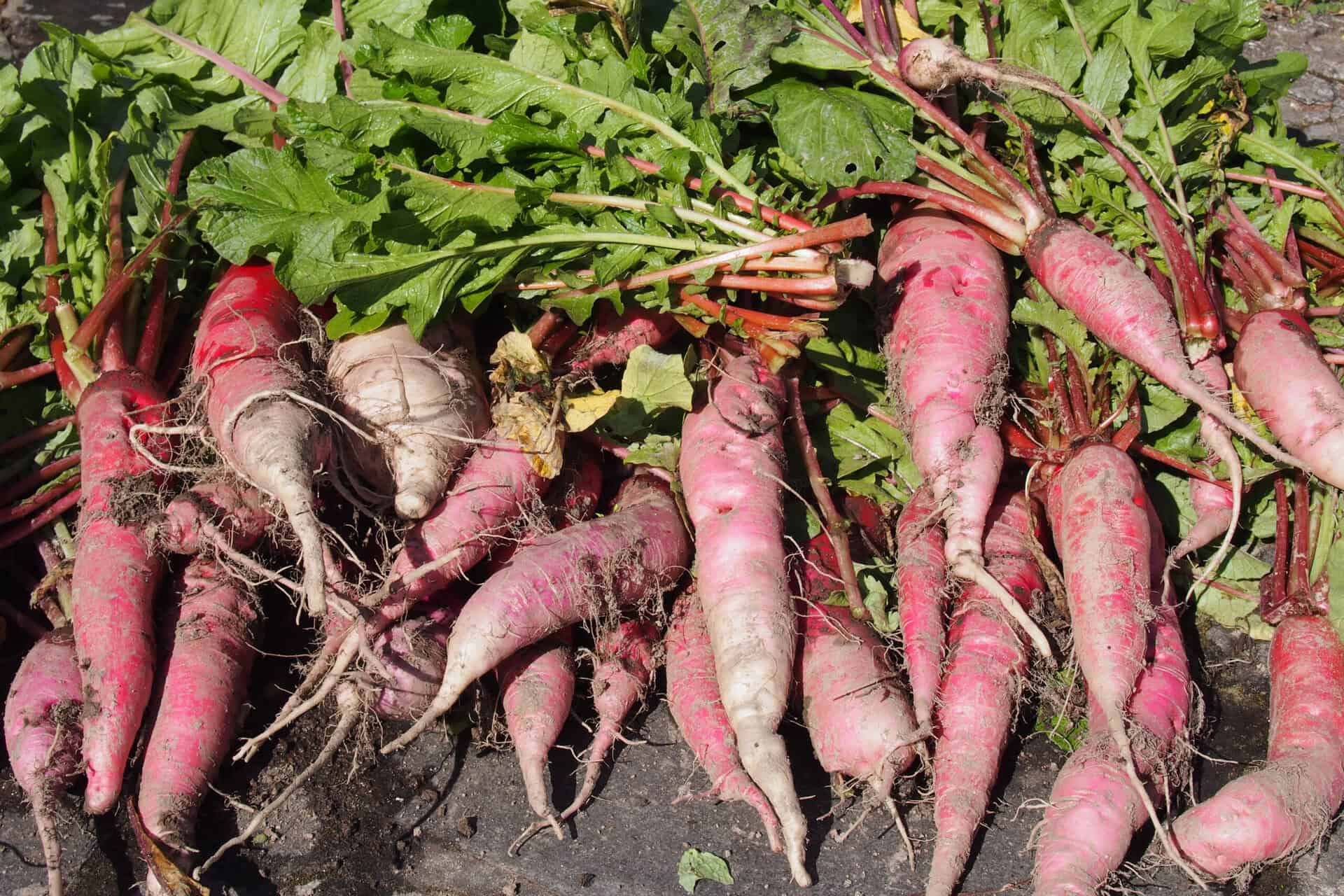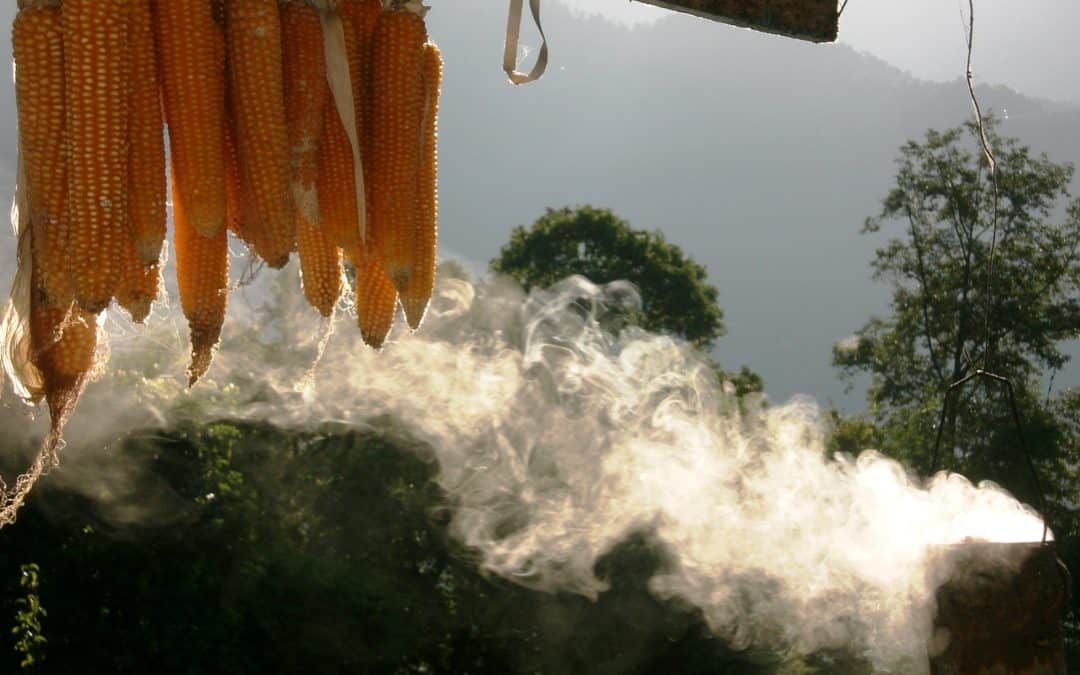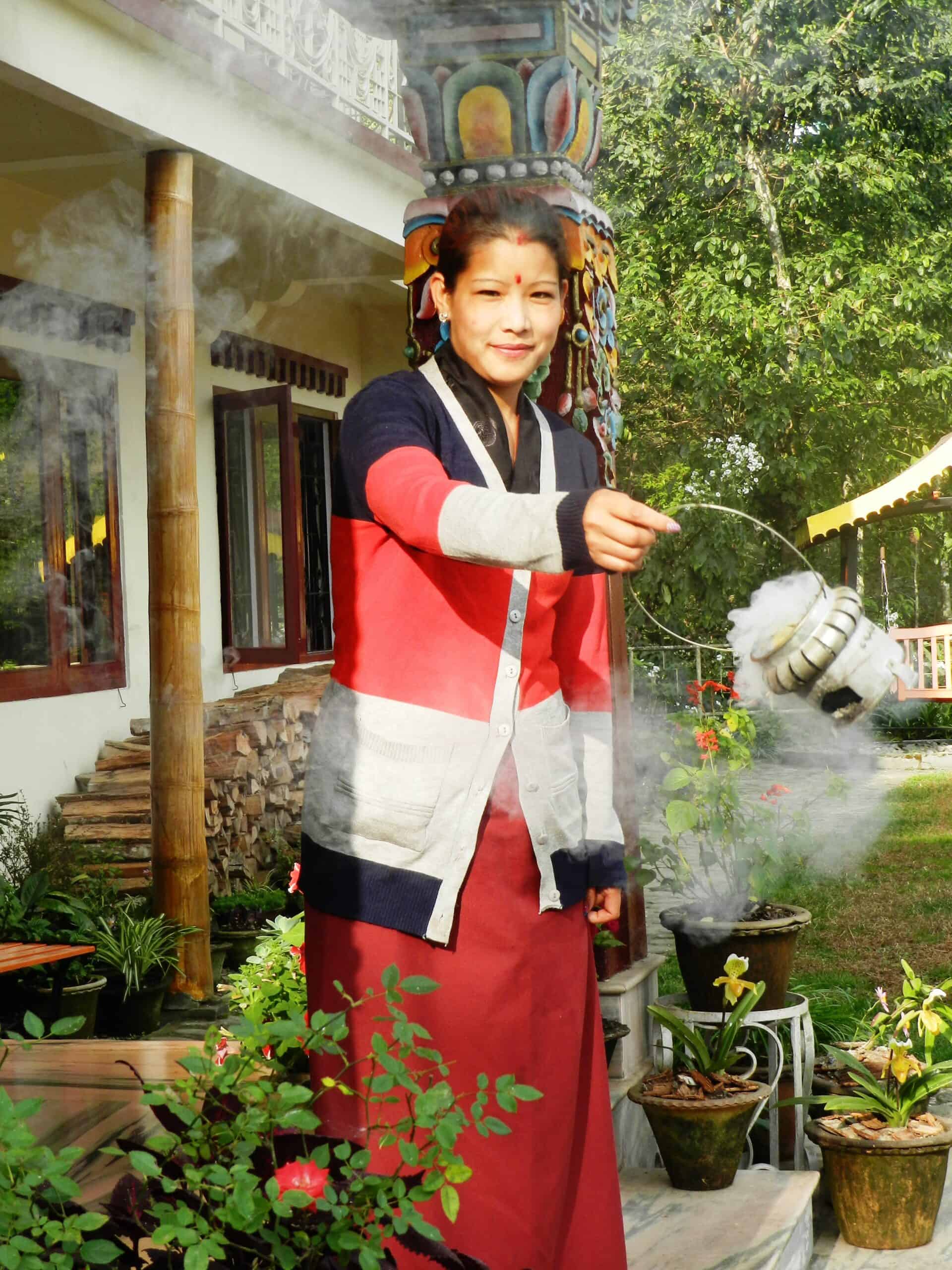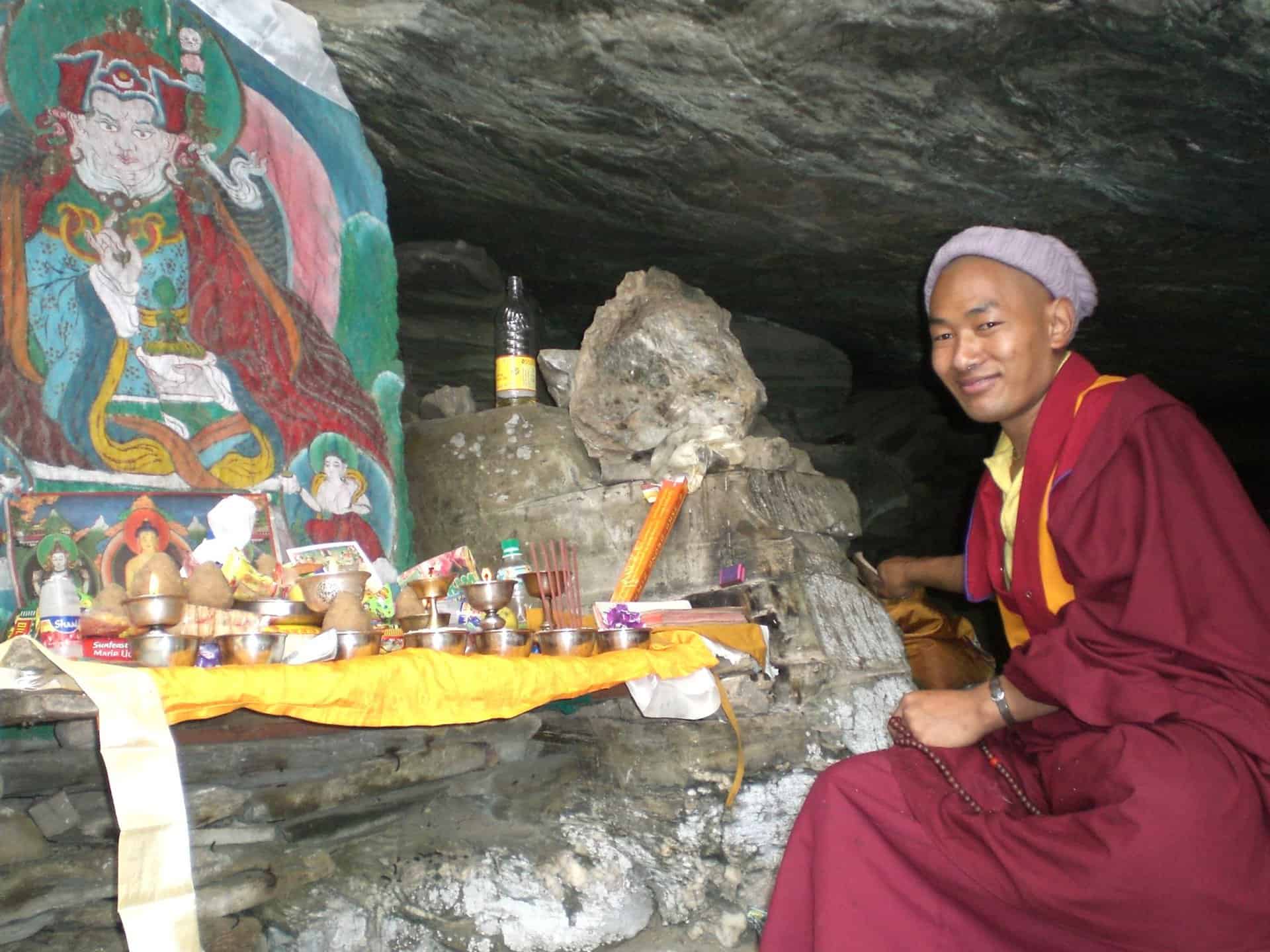Maseura – Yam Nuggets
A Traditional Delight with a Modern Twist at Bamboo Retreat Hotel, Sikkim
«Maseura», also known as yam nuggets, is a beloved dish in Nepalese households, particularly in the hilly regions of Nepal, Darjeeling and Sikkim. Made from fermented, sun-dried vegetable balls, typically using the roots of a yam or taro plant along with leaves and black lentils, maseura has been a staple during the dry season when fresh greens are hard to come by. At Bamboo Retreat Hotel we grow the yam referred to «Dudhe Pindali» in Nepali language (Colocasia sp.). Once a common sight in every kitchen, maseura is now considered a luxury food, a nostalgic taste of the past.
-
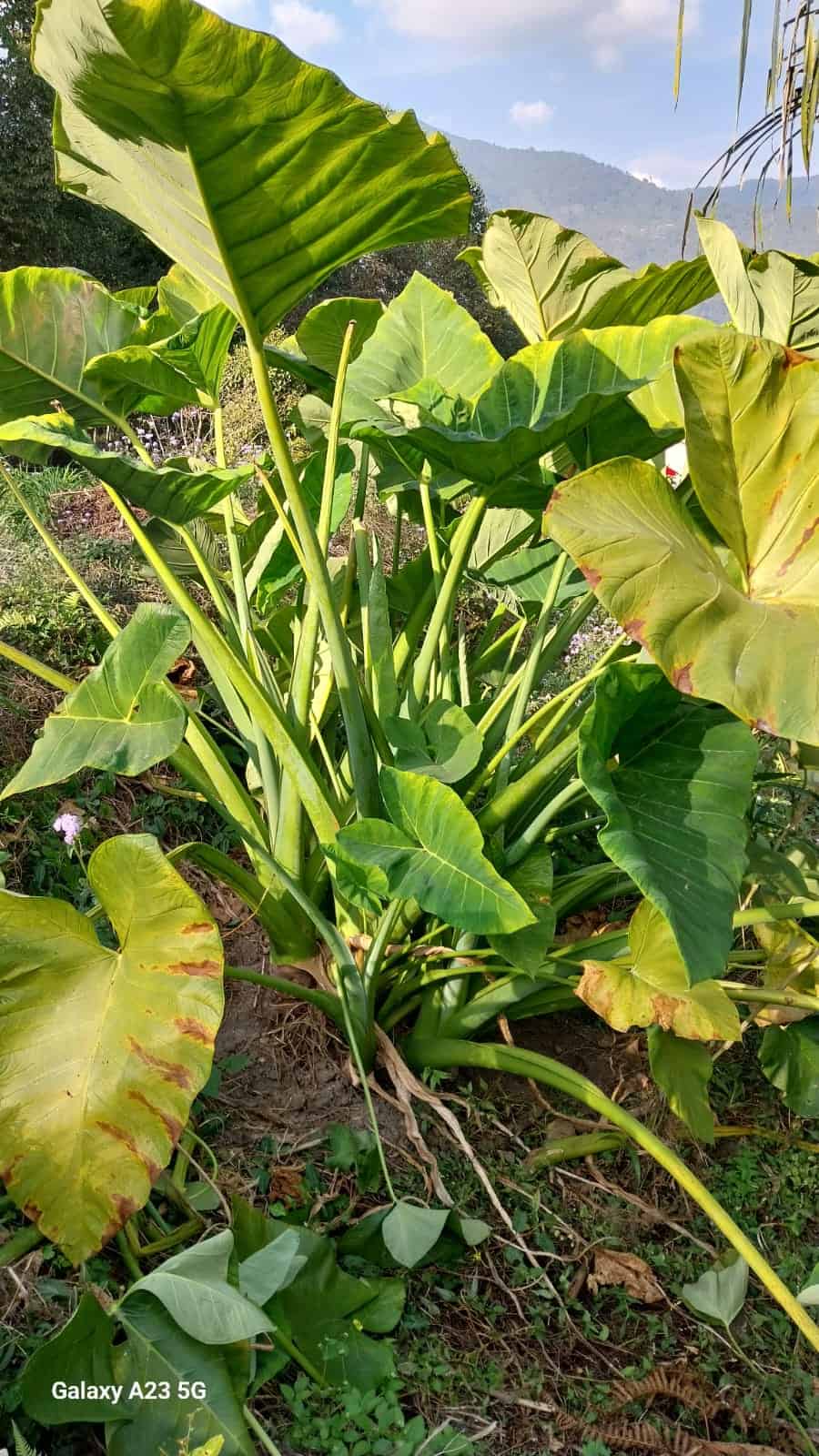
Taro roots are edible when processed correctly by soaking, cooking and/or fermenting.
-

Taro roots are harvested in late autumn to early winter.
Picture right: Taro roots are harvested in late autumn to early winter.
At Bamboo Retreat Hotel, we honor this traditional dish by preparing it upon special request, ensuring our guests get a taste of authentic Himalayan cuisine. Maseura, with its rich flavors and nutritious benefits, is a testament to the culinary ingenuity of the region, offering an alternative source of vegetables when the growing season is over.
Maseura is more than just food; it is a connection to the land and culture of the hills. Each family has their own way of preparing this dish, with some using ingredients like chayote or broad mustard leaves in place of yams and black lentils. In Sikkim, various types of yams are cultivated, each offering unique flavors and textures that can be used for making maseura. Among the most popular varieties are Taro (Colocasia esculenta), also known locally as “gaderi” or “kalo kachu,” which has a mildly earthy taste and smooth texture. Another common variety is elephant foot yam (Amorphophallus paeoniifolius), known for its robust flavor and fibrous consistency. Both of these yams are well-suited for maseura due to their ability to hold up well during the fermentation and drying process, adding a rich depth to the nuggets. The use of local, organic yams not only enhances the flavor but also ensures that the maseura retains its traditional, nutritious qualities, connecting this dish deeply to Sikkim’s agricultural roots.
-

Taro-Wurzeln sind essbar, wenn sie richtig verarbeitet werden, durch Einweichen, Kochen und/oder Fermentieren.
-
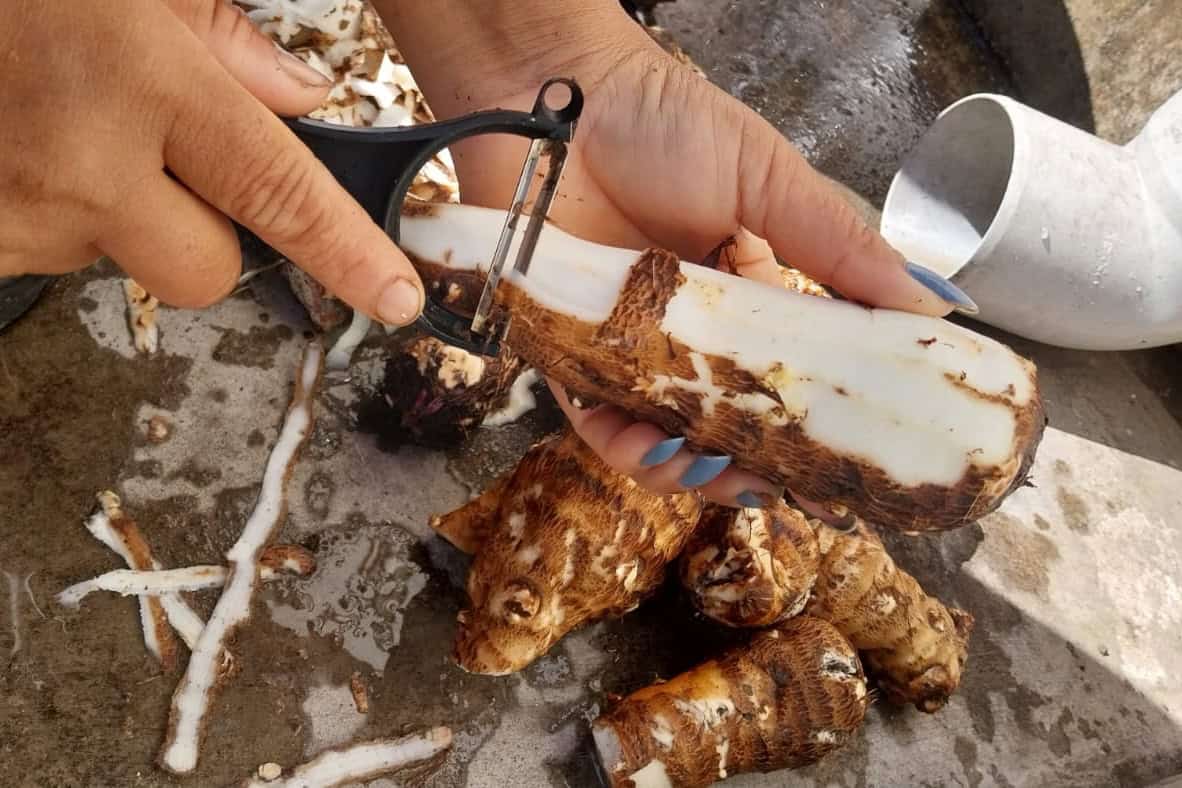
After being harvested and washed, the roots are peeled
Picture right: After being harvested and washed, the roots are peeled.
At Bamboo Retreat, we celebrate this age-old tradition, sharing its story with guests who are eager to learn more about the rich heritage of Sikkim’s cuisine. For those who want to try maseura at home, we’re happy to provide this simple, authentic recipe.
Recipe: Maseura – Yam-Nuggets
Ingredients:
- 500g black gram (black lentils)
- 40g grated fresh yam
- Chopped fresh garlic leaves (or dungdunge, an alternative local herb)
- Chopped fresh coriander
Preparation:
- Soak the black gram overnight, then carefully remove the bran from the seeds.
- Blend the soaked black gram with a little water until you achieve a thick, finely minced paste.
- Mix the paste with the grated yam, garlic leaves (or dungdunge), and coriander.
- Shape the mixture into small balls (about the size of a Musleri nut) and place them on a bamboo palate.
Sun-dry the nuggets for about a week, ensuring they are completely dried. Once fully dry, store them in an airtight jar. Properly dried maseura can last for over a year, making it a great pantry staple.
-

Yam roots are ground
-

Next, the ground roots are either mashed or pureed.
Cooking with Maseura
While the preparation of maseura takes time, cooking it is a relatively simple process. These yam nuggets can be transformed into delicious curries or soups. Below is a traditional way to cook maseura at Bamboo Retreat:
Cooking Method:
- Heat oil in a pan and lightly fry the sun-dried yam nuggets on medium heat for 2 minutes. Be careful not to over-fry them, as they can become bitter.
- Remove the nuggets from the pan and set them aside.
- In the same pan, add chopped onions and diced potatoes, sautéing them until golden brown.
- Stir in turmeric, salt, and a paste made from garlic and ginger.
- Add tomatoes and cook until they soften.
- Return the fried yam nuggets to the pan and stir them into the mixture.
- Add water to create a thick, flavorful gravy, and cover with a lid. Let the dish simmer until the flavors meld together and the nuggets are fully cooked.
- Serve hot with rice for a nourishing meal.
For a variation, you can use the same recipe to create a soup by adding more water. Maseura’s versatility makes it perfect for both a hearty meal or a lighter, comforting broth.
-

The mashed mixture is shaped into nuggets and laid out to dry.
-

The end product, dried ‘Mausera’ or ‘Yam/Taro Nuggets,’ has a long shelf life.
-
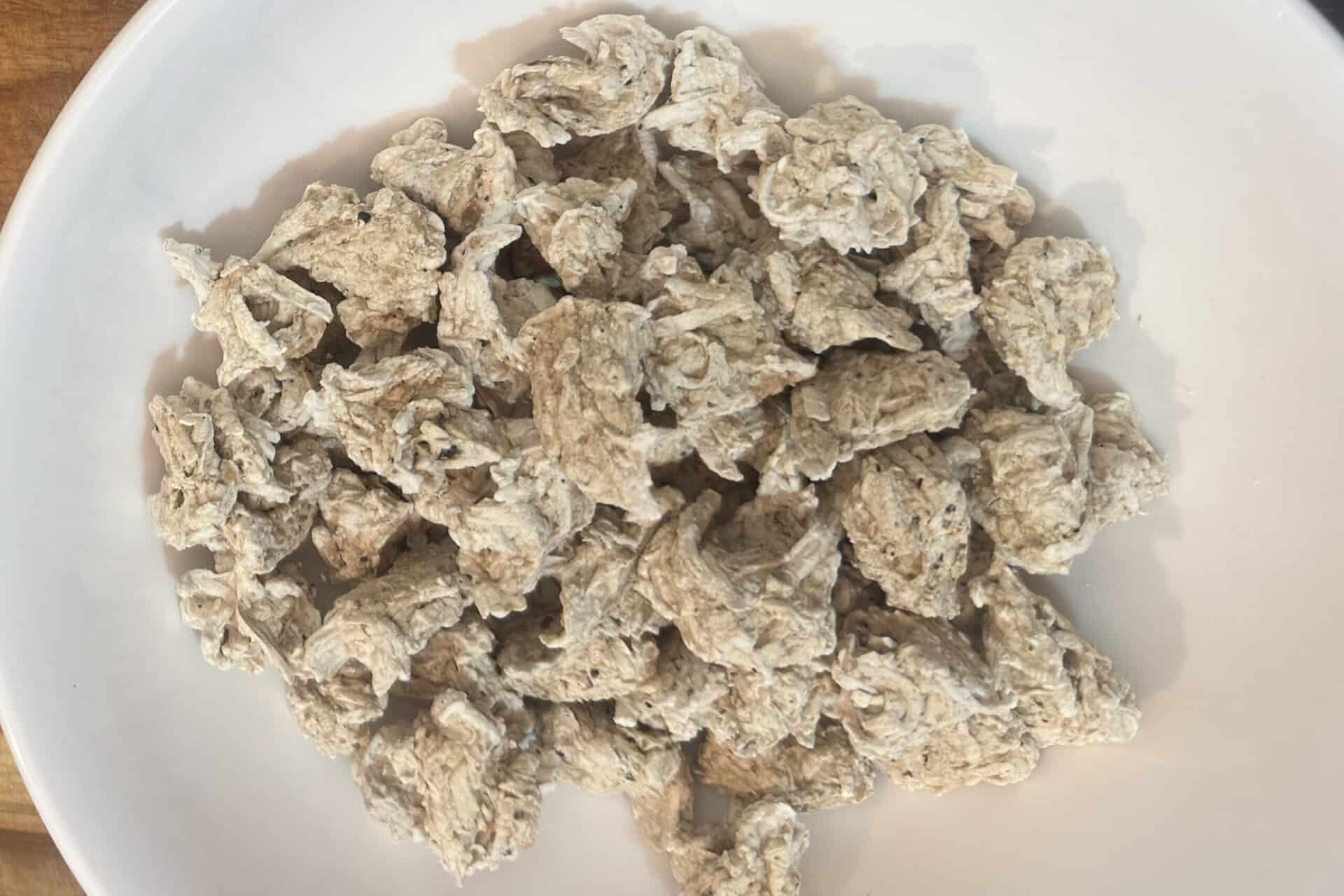
Dried Yam Nuggets
-

Additional Ingredients required to prepare a savory Yam Nugget Curry include Potato, Tomato, Onion, Garlic, Chili and Chive or Coriander
Picture top right: The end product, dried ‘Mausera’ or ‘Yam/Taro Nuggets,’ has a long shelf life.
Picture bottom left: Dried Yam Nuggets.
Picture bottom left: Additional Ingredients required to prepare a savory Yam Nugget Curry include Potato, Tomato, Onion, Garlic, Chili and Chive or Coriander

The Story Behind Maseura at Bamboo Retreat
At Bamboo Retreat Hotel, we value sustainable practices and a deep connection to nature. Maseura fits perfectly into our philosophy, as it represents a sustainable, resourceful way of cooking that’s been passed down through generations. From our organic garden to your plate, we strive to offer our guests a taste of Sikkim’s culinary and cultural heritage.
Whether you’re exploring the stunning landscapes of Sikkim or seeking a culinary journey into the heart of local traditions, Bamboo Retreat offers an experience like no other. With its deep roots in the region’s ethnobotanical wisdom, maseura is just one of the many dishes that reflect the symbiosis between culture, nature, and food in the Himalayas.
Discover Sikkim’s Culinary Heritage
Your stay at Bamboo Retreat Hotel is more than just a getaway—it’s an immersion into the world of traditional Himalayan cuisine. Join us in exploring the timeless practices of sun-drying, fermenting, and cooking dishes like maseura, and take home not only memories but also recipes that connect you to the land.
Plan your journey and experience Sikkim’s rich culinary traditions with us.
Discover more about our tours and stays: Explore Rural Sikkim
Or book a customized trip: Bamboo Retreat Hotel Packages



